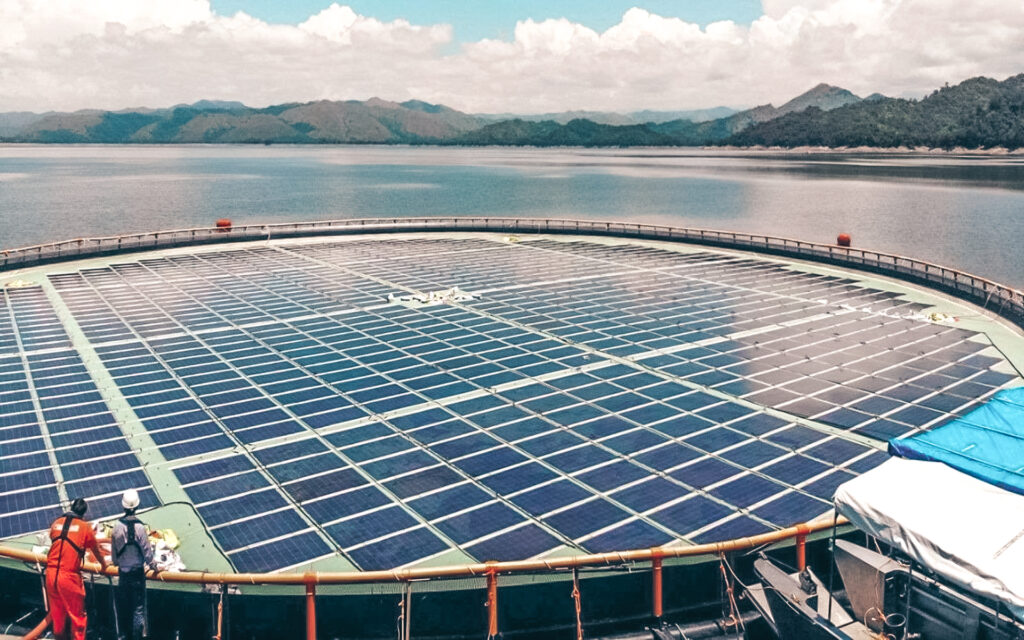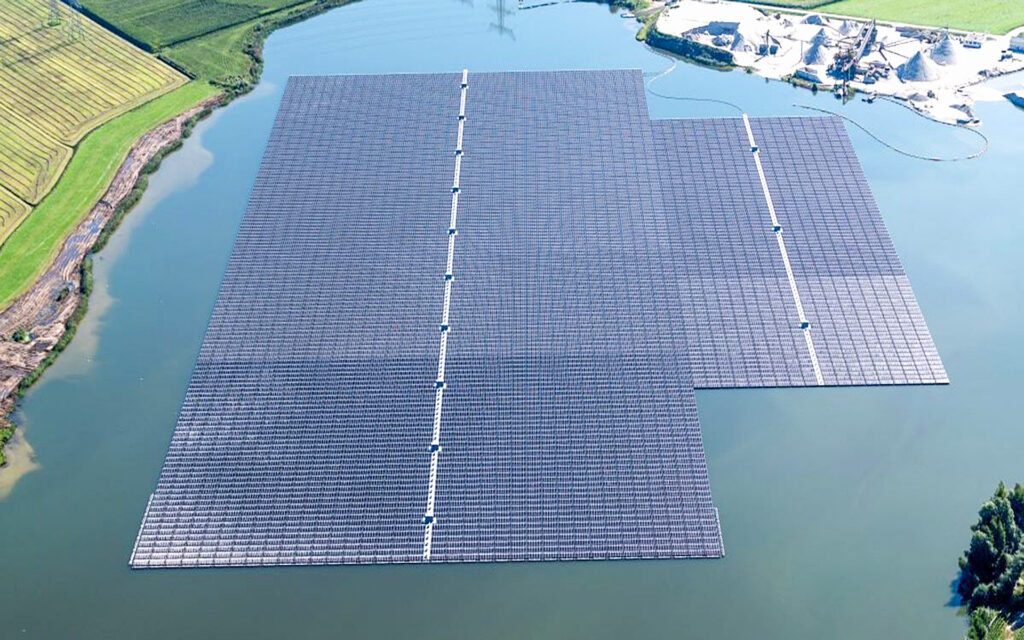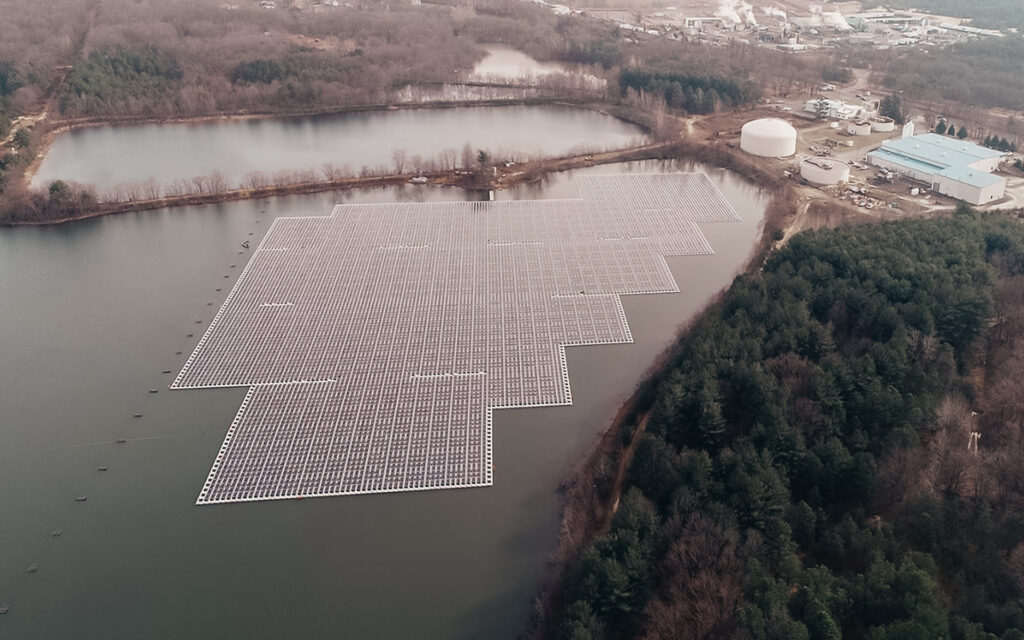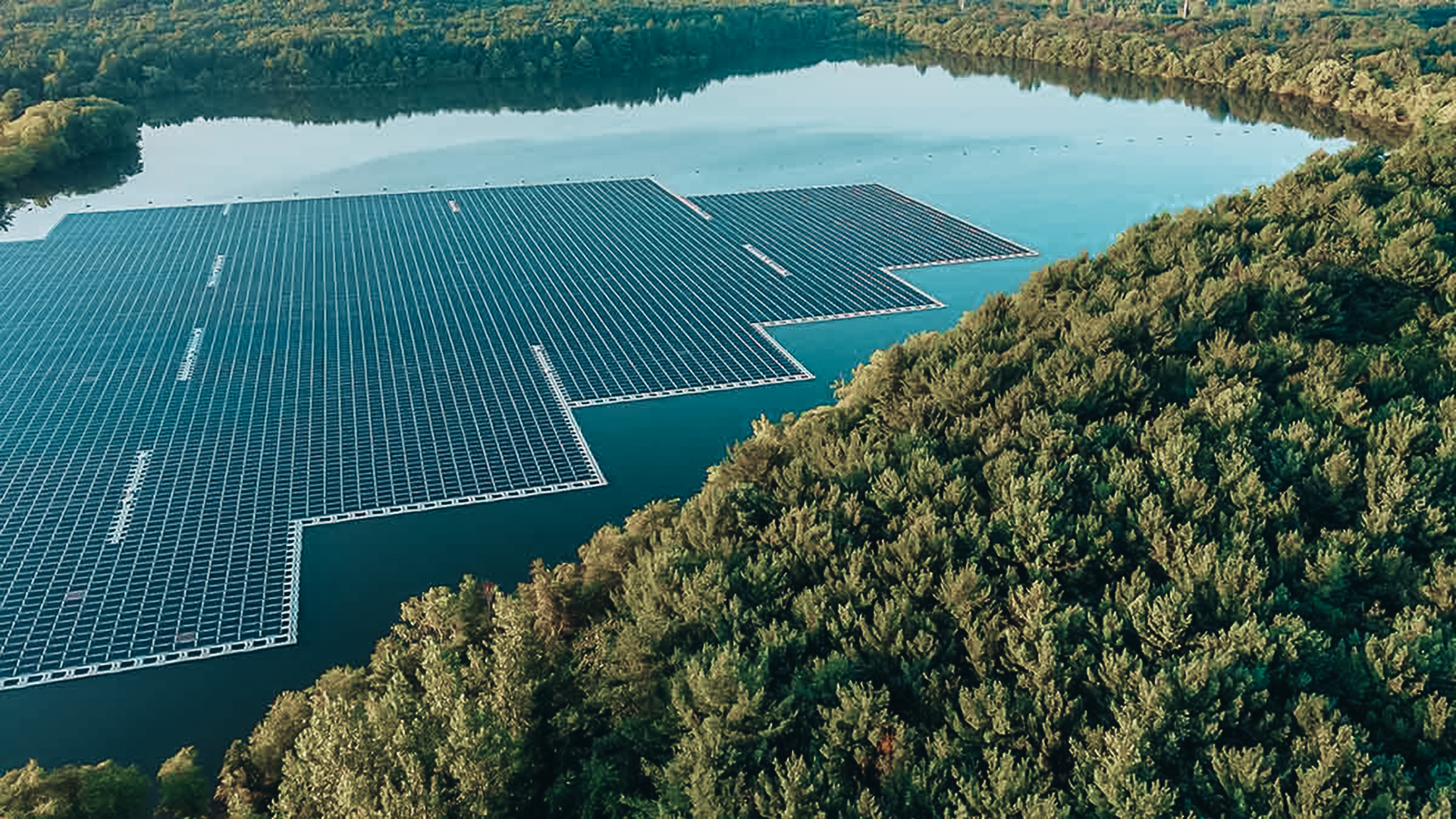The widespread use of photovoltaics promises an ever decreasing dependence on fossil fuels. But the installation of traditional solar farms is costly, mainly because of the high cost of the land on which they are built. To overcome this drawback, floating platforms have been considered to place the panels. Currently, in China, the Dezhou Dingzhuang Floating Solar Farm (320 megawatts) is the largest floating solar park ever built.

In a study by the U.S. National Renewable Energy Laboratory (NREL), a projection was made. It was estimated that the installation of a floating solar farm, on the more than 24,000 reservoirs in the United States, could produce about 10 percent of the nation’s annual electricity production.
Advantages
The floating solar farm functions very similarly to traditional solar systems, except for its placement. In this case, the solar panels are attached to floating structures to keep them afloat on the surface of a body of water. The installations are typically located on reservoirs. These include reservoirs of wastewater treatment plants, drinking water reservoirs, or hydroelectric power plants.
Research suggests that solar panels may work more efficiently when floating on the surface of water. Although, researchers stress that further study is needed.
Increased efficiency
Certainly, the floating solar farm can generate more energy than its land-based counterpart. And this is because of the cooling effects peculiar to water. The proximity to water helps the solar panels stay cool. And this allows them to absorb more solar energy. Researchers have estimated that covering 10 percent of the world’s reservoirs with floating solar farms could generate as much electricity as all the world’s operating fossil-fuel power plants combined.
What you see is that when the panels are placed on water, they essentially increase in efficiency. Because the water is able to lower the operating temperature of the panels.

Disadvantages
However, there are surely disadvantages to using this technology as well. One of them is that floating solar technology currently has higher costs than land-based solar, even though it may generally be more practical for large-scale applications. Indeed, the panel support system must be highly resistant to both corrosion and mechanical stress. Thus, having a higher construction cost and higher management costs generally corresponds to having a longer lifetime.
High impact on the ecosystem
In addition, the floating solar farm can have different impacts on the ecosystem. Floating solar is installed on very different bodies of water and in many different climatic regions. This can make environmental impact assessment more complex. The design of a floating solar farm requires careful feasibility studies.
It is also unclear how plastic and metals from floating mechanisms will affect water quality. Or whether they will affect algae growth and the ecosystem in general.
The panels used in the floating solar park must have specific characteristics. They must be dustproof, lead-free, highly resistant to moisture, and well protected from water.
Floating solar parks
There are various installations of floating photovoltaic panels around the world. From China to the United States. The largest floating PV installation in America is located in Sayreville, New Jersey. And many more are planned. For example, California plans to start a pilot project to line irrigation canals with floating solar panels. Many players involved in energy production and distribution are considering floating solar farms. This new solution for photovoltaics could very well be the future of solar.

For further study: Floating Solar Panels
You might be interested in: The rise of bright green environmentalism





